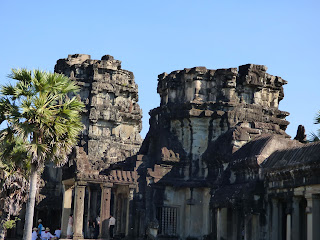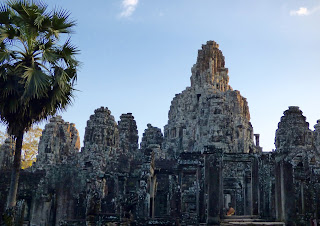Siem Reap, Cambodia
il 26-28 novembre
The Angkor Temple Complex, deemed a UN Heritage Site and one of the wonders of the world, consists of hundreds of structures built from the 9th to 14th century that reflect the history of the rise and fall of the Khmer empire. The largest monument of the complex and the best preserved is the unsurpassed Angkor Wat. The grand scale, the incredible detail of the carvings that decorate its walls, the sheer composition and balance of this architectural masterpiece render inadequate any words describing it, although many have tried...
Built between 1113 and 1159 AD as a Hindu temple honoring the god Vishnu and covering 500 acres, Angkor Wat also served as a funerary temple for King Suryavarman II, under whose reign the construction began. Composed of five main towers, the central tower represents the mythical Mount Meru, home of the Hindu gods, with the remaining four the peaks of the mountain. Surrounded by walls and a moat, the complex, because it is so vast, can be overwhelming at first glance when one tries to figure out where to begin, but its series of elevated towers, covered galleries, chambers, porches, and courtyards linked by stairs beckon one forward to take the plunge and just explore.
Built between 1113 and 1159 AD as a Hindu temple honoring the god Vishnu and covering 500 acres, Angkor Wat also served as a funerary temple for King Suryavarman II, under whose reign the construction began. Composed of five main towers, the central tower represents the mythical Mount Meru, home of the Hindu gods, with the remaining four the peaks of the mountain. Surrounded by walls and a moat, the complex, because it is so vast, can be overwhelming at first glance when one tries to figure out where to begin, but its series of elevated towers, covered galleries, chambers, porches, and courtyards linked by stairs beckon one forward to take the plunge and just explore.
Ta Prohm, built under Jayavarman VII (reigned from 1181-1220) and dedicated to Buddhism, is a long low complex of buildings with concentric galleries and surrounded by a rectangular wall (2,270 ft. in width by 3,300 ft. in length.) During its restoration, a decision was made to only partially cut back the jungle so the buildings are covered with roots of banyan and kapok trees growing high above it which add to the silence and mystical aura throughout.
Angkor Thom was a 12th century Buddhist city founded by King Jayavarman VII and, at its height, is believed to have supported perhaps 1,000,000 people in the area. Entered by five main gates, each approached by a road built over a moat, it is another one of the marvels of the Angkor Temple Complex. Built on three levels with numerous galleries shrines, temples, and terraces, it is the mysteriously smiling faces that capture one in their gaze. Ah, to know what secrets lie within the walls…







































I can't imagine what a feeling it must be to stand, surrounded by all of the energy, beauty, history, and mystery! Funny, but I often think of how much of Western art is so "God directed" in comparison to these expressions, which seem to have such a strong, organic connection to our humanity, even amidst the religious symbolism. Incredible photos!
ReplyDeleteVince, thanks for your thoughtful comment. "A strong organic connection to our humanity" - your words resonate with me; there is such spiritual energy and mystery in these places.
ReplyDelete